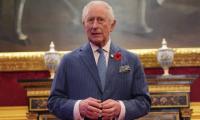Speech predates writing. Oral language is the essential language. Technically, the writing of a language is just a graphic representation of said language; and it can never represent all the variations of intonation, accent and other phonetic variations of a language.
But the writing of a language has become necessary in human civilization. Part of this necessity arose from the urge of human beings to be eternal, authentic and precise. This is how and why pictographs, hieroglyphs, logographs and finally alphabets came into existence.
Writing is a means of authenticity. It first started for religious texts and then for making records – especially of economic transactions and laws to govern society. Writing of religious scriptures made them authentic. Writing of laws made people mindful of the governing principles in a society. Writing has given individuals a chance to preserve their creativity – especially poetry; and poetry, like speech, predates prose in every human society. This is because poetry is also basically meant to be memorized easily and passed on to others orally with ease.
In the modern discourse of advancement, literacy has become the basic wheel. The written word has given us ‘civilization’. Writing made us a world full of books. Imagine a world without the written word, without books. How dull it seems – even though it may look more equal. Writing has also become a powerful tool to subjugate others. Alexander had Homer’s ‘Iliad’ with which he felt more ‘powerful’ to overcome others. Written scripture tried to authenticate religion and homogenize followers. Had there been no other cultural or social ethos, the major religions would have been more homogenized.
While writing thus advanced in some societies for some languages, many languages lagged behind and their speakers felt ‘left out’ from the race. Today these left-out languages are the ones that are termed ‘endangered’. Interestingly, the majority of such languages are spoken by people who have been brutalized, enslaved and invaded in the past.
The world now plays the alarm bells of the danger of extinction of this cultural diversity. Efforts for revival and revitalization have been recommended. There are many examples of such efforts and models. One effective model among is to write these languages and increase their literacy among their speakers and their younger generations. This is suggested because ‘powerful’ languages got their prestige and power through their having been written.
So, one way to revitalize an endangered language is to build literacy in it. For this, a writing system is needed for the language. Experts in literacy, education and linguistics suggest four basic principles while working on a writing system (script and an orthography) for an undocumented language. These principles are: alphabeticity, learnability, acceptability and transparency. They suggest that a writing system should be alphabetical as this requires fewer symbols/letters to write the language and memorize it.
Furthermore, the writing system should be as easy and simple as possible so that the written part of the language can be learned easily; the writing system should be based on the social, psychological, political and educational contexts where the speakers of the language live; and finally, the writing system should be aligned with the writing systems of the national or other dominant languages of the territory as this way there could be more harmony, ease in learning and the ability to use the languages to strengthen each other.
In northern Pakistan, there are more than 30 such endangered languages. The writing systems for many of these languages are recent and designed after 2000 CE. As no writing system for any language has ever been complete, so is the case with these recent writing systems for the languages in northern Pakistan. Language is living and like every living thing it is prone to evolution. No writing system, even of advanced languages such as English, the European languages, Arabic, Farsi, Hindi, Urdu etc is complete. English is held as the ‘most advanced’ language by Anglophiles yet in English, too, we see changes in its writing system. For an example, look at the difference between American and British English as the former has gotten rid of many of the orthographic complexities of the latter. The same is true for Urdu and other developed languages.
In this way, there should be no stressing concern for those who have been working on the revitalization of their endangered languages whether in southern or northern Pakistan; and who have recently developed orthographies for their languages with the support of linguists and international organizations. Based on these orthographies, some communities have developed teaching materials and started educational programs in their languages. This is usually known as mother tongue based multilingual education and operates on the principle of multilingualism where children start their early education in their mother tongues and later on are ‘bridged’ to other languages. Bridging here means not a transition but the ‘adding of Urdu and English’ to the education system that these communities and their organizations have developed.
These educational programs, though very under-resourced, have greatly served children and their parents in learning how to write and read their languages along with adding extra advantages to the learning capacity of the students. One of the successes of these programs are the simple orthographies built on the basis of the four principles encapsulated above. All of them are based on the Arabic script as the communities, literate or illiterate, are familiar with it through the Holy Quran and the widespread use of Urdu in public education and in the media.
The majority of the languages spoken in northern Pakistan – upper Khyber Pakhtunkhwa and Gilgit-Baltistan – are of the Dardic sub-group of the Indo-Aryan languages. They, and their neighboring languages – Burushaski, Wakhi, Yedgha – have some unique sounds, and special characters for these sounds, which are not commonly used in many other Indo-Aryan languages and very dissimilar from Urdu as well.
The activists and educationists working for the revitalization of these languages have used different alphabets, based on the Arabic/Urdu alphabets, for their languages. One wishes that all the common special sounds in these languages had similar alphabets so as to enhance the mutual literacy of these languages and strengthen harmony among the people – yet no homogeneity in this regard, too, could be forced upon them.
As said earlier, the orthographies developed for these languages will evolve over time and definitely undergo changes as is common with every living thing – and these languages are living. These orthographies are now working well. We need to expand, extend and spread the literacy of these languages among the speakers. Once the writing tradition expands, the orthographies will automatically evolve and further adaptation may be needed. Whatever adaptation is needed to be taken, the activists and educationists engaged in the job do need to remember the four principles elaborated above.
The writer heads an independent organisation dealing with education and development in Swat.
Email: ztorwali@gmail.com















